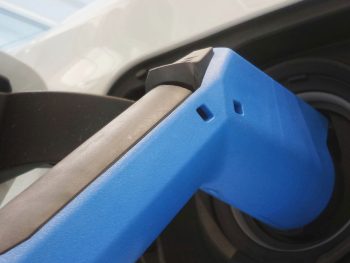EV ranges ‘far better than drivers think’, says AA
Almost all UK drivers overestimate the number of breakdowns from electric vehicles running out of charge and should have more confidence in making the switch.

Of the 13,000 EV breakdowns the AA attended in 2020, under 4% were for vehicles running out of charge. And this figure has halved in the last few years
That’s according to the AA, which says EV ranges are “far better than drivers think”.
Its data – released for World EV Day 2021 today (9 September) – shows that of the 13,000 EV breakdowns it attended in 2020, just under 4% were for vehicles running out of charge. And this figure has halved in the last few years.
But its poll of 14,500 drivers found only 1% could correctly estimate the infrequency of this issue, with the average guess being two-thirds (65%) of all EV breakdowns due to the main driving battery running out.
Instead, the top two breakdowns for combustion engine vehicles and EVs are the same – tyres and the battery being the main causes of faults.
AA president Edmund King said: “As we fast approach the 2030 ban on new petrol and diesel sales, more drivers are thinking about electric cars.
“However, there are still concerns about the existing charging infrastructure and single charge range. Likewise, most drivers totally over-estimate the percentage of breakdowns due to running out of charge.
“The reality is far better than drivers think, with very few EVs failing to reach a charge point. In fact, EVs and combustion cars share the same top two reasons for breakdowns which are tyres and the smaller 12V battery.
“As more charge points, especially rapid chargers, are installed across the country the number of cars failing to reach one will further reduce, providing more confidence to drivers to help them make the switch.”
Reassuringly, the AA research did find that drivers are aware of single charge range. Respondents were asked what they believed to be the average distance an EV could travel on a single charge, with a quarter (25%) correctly identifying a range of up to 200 miles. Only one in 16 (6%) were expecting less than 100 miles from a single charge.
The research complements the AA’s work to help drivers transition between combustion and electric vehicles including by providing all patrols with EV training and breakdown equipment, as well as developing its Freewheeling Hub innovation. It’s also teamed up with urban ecomobility organisation Silence UK to produce a concept electric e-moto scooter.













Michael Fallquist15. Sep, 2021
Good insight on EVs and, more importantly, the ranges that can be offered from different types of fueling. Even though these vehicles are incredibly reliable, in this regard, it’s still important to know just how much mileage one will receive from a single charge.